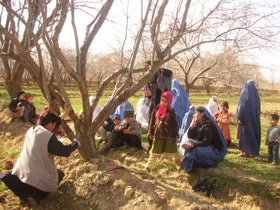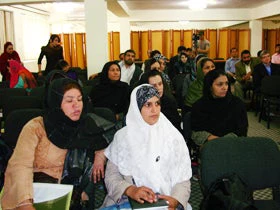
Afghanistan is gradually regaining its strength in horticulture. Between 2006 and 2009, it was the seventh largest exporter of raisins at US$150 million and the 11th largest exporter of almonds at US$110 million. Nuts and fruits (both dried and fresh) make up about 35 percent of Afghanistan’s total exports. The sector is a potential growth engine for Afghanistan, and rural households could benefit most. What could be done to develop horticulture value chains that work for the rural poor, in particular, for women? The World Bank published a report in coordination with the Ministry of Agriculture, Irrigation, and Livestock (MAIL) on gender and value chains to understand the constraints and opportunities for women and men in increasing their income by moving up in the value chain through producing more crops such as grapes/raisins, almonds, and saffron. The small grant has been provided to two saffron associations in Herat province, to pilot some of the recommendations from this report.

Social and cultural traditions are the main constraints for accessing market information or understanding quality standards. Although there are variations by region, most rural women are not allowed to: (i) interact with men outside the family; (ii) work outside the home without permission from a male family member; (iii) travel outside their village; or (iv) own land. These practices impact women's mobility and access to services, including input supplies and market linkages that are generally provided by men.
Opportunities for women producers, therefore, are through (i) women group mobilization, (ii) development of women’s extension services, (iii) training, as a part of extension services, on harvesting and post-harvest handling, in particular, quality control, (iv) use of information technology in extension and marketing outreach.
The report was presented at a workshop organized by MAIL. This was participated by 95 practitioners in and out of MAIL, including Ministries of Rural Development, Education, and Women Affairs, donor agencies, women producer groups, and women extension workers. At the event, 50 percent of the participants were men!


Join the Conversation